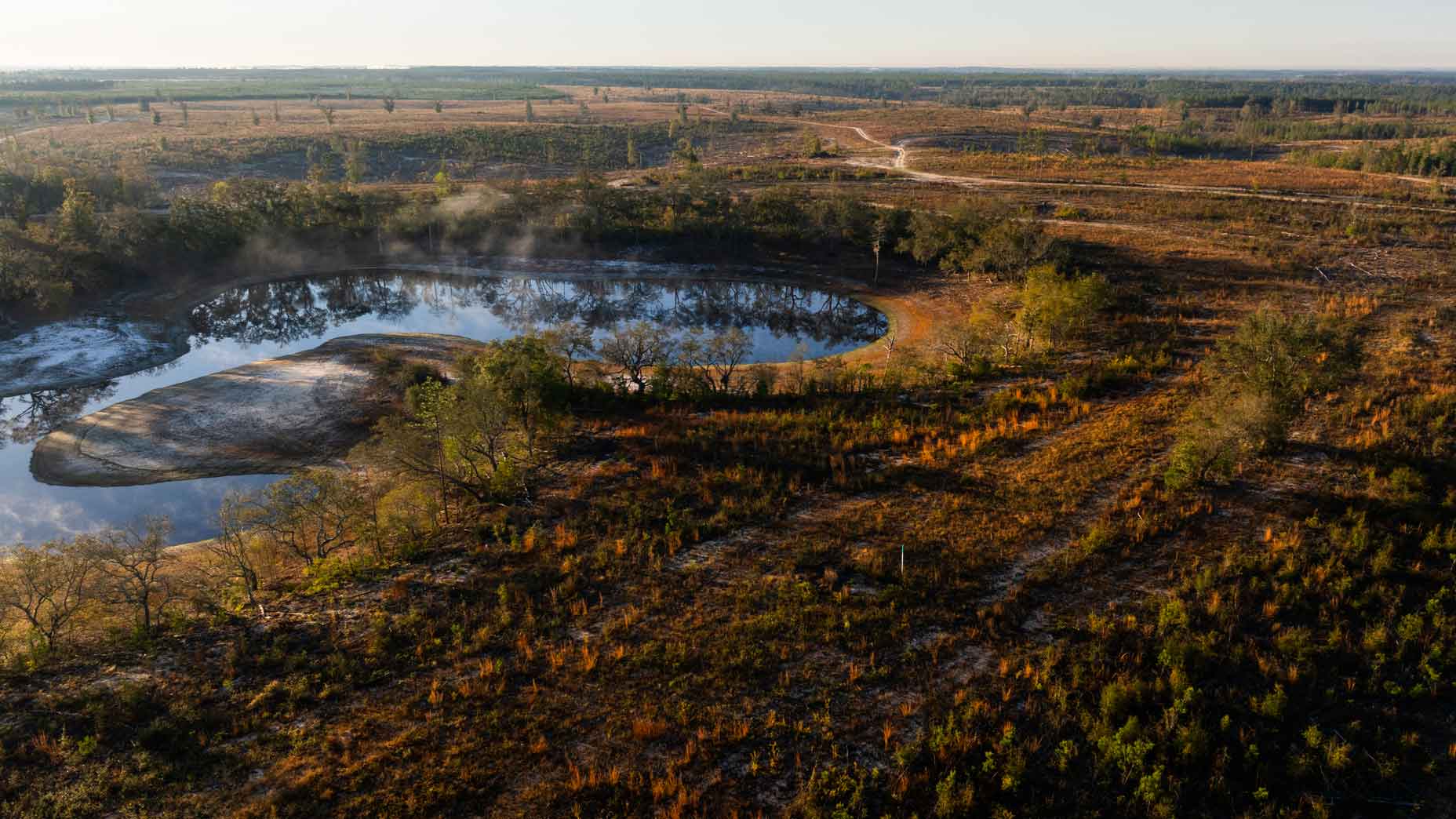Inside the U.S. Women’s Four-Ball site: 6 things to know about Oak Hills CC
- Share on Facebook
- Share on Twitter
- Share by Email

Oak HIlls, in San Antonio, has a long history as a tournament host.
USGA/John Mummert
“Nestled in San Antonio’s Southwest Texas Medical Center . . .”
As course descriptions go, the language on the Oak Hills Country Club website does not exactly drip with Golden Age romance. But just as you can’t judge a driver by its head cover, you can’t take the full measure of a layout by the boilerplate on its landing page.
Behind that less-than-inspired lingo is a pedigreed course with a rich history and a long resume as a tournament host, a CV that will expand this weekend and into next week when Oak Hills welcomes the 9th U.S. Women’s Amateur Four-Ball Championship.
The field for the team-format event is eclectic, featuring players from seven countries who range in age from 14 to 41. Six of the two-player sides are siblings, and 16 are composed of college teammates, current, past or future.
Everything is set for a compelling competition. With play scheduled to begin on Saturday, here are 6 things you need to know about the stage.
1. It’s a Tillinghast design
The decade leading up to the Great Depression was a busy time for the Golden Age giant, A.W. Tillinghast. In 1920 alone, the celebrated architect had 40-plus projects in the works, including Baltusrol, San Francisco Golf Club, Philadelphia Cricket Club and Upper Montclair (the New Jersey host site of this week’s LPGA Cognizant Founders Cup). The following year, another commission came his way, on the leafy outskirts of San Antonio. Originally known as Alamo Country Club, Oak Hills was first conceived as a 25-hole facility, with an 18-hole championship course and a 7-hole short course drawn up by a pair of unknown architects. But the design work was soon handed over to Tilly, who routed a single 18-hole layout. The club opened in 1922.
2. It lives up to its label
As the name suggests, Oak Hills is a sylvan layout. “If you’re slightly off the fairways, you’re in the trees,” says Gretchen Johnson, a GOLF magazine course rater who is competing in this week’s championship. Tight playing corridors give way to pushed-up, contoured greens, most of which are jealously guarded by bunkers. “Outside of 15 feet, a lot of putts will break two ways,” Johnson says. This is not a course to bomb-and-gouge. After an errant drive, Johnson says, “it will be fun to see how aggressive players get,” and whether they opt to punch out to the fairway or take bolder aim toward a greenside bunker. Not that finding the short grass off the tee guarantees a clear approach approach to the green. On a number of holes, including the par-4 1st, Johnson says, “you have to find the proper side of the fairway or you don’t have a shot due to being blocked out by trees.”
3. Big names have won here
The Women’s Four-Ball isn’t Oak Hills’ first rodeo. In the last 60-plus years, the club has hosted 34 PGA Tour and Champions events, as well as the 2001 U.S. Junior Amateur. In 1987, Oak Hills was the site of Tom Watson’s victory in the inaugural Tour Championship. Other big-name winners on these grounds include Arnold Palmer, Lee Trevino, Hale Irwin, Ben Crenshaw, Corey Pavin and Nick Price, all of whom claimed Texas Open titles during the period when the tournament was held at Oak Hills, from 1961-92.
Foursomes vs. four-ball: Match-play format differences, explainedBy: Zephyr Melton
4. The par-5 5th is a beast
When it was built, the 657-yard par-5 5th was recognized by the USGA as the longest golf hole in the world. That’s no longer the case. But the hole still tips out at the same hefty yardage. For this week’s tournament, the back tees (known at the club as the Tillinghast tees) won’t be in play. The markers will be set at 571 yards, with an alternate tee at 526 yards. By any measure, though, the hole remains a test.
5. Each 9 ends with a 3
In a course-routing rarity, both the 9th and 18th holes at Oak Hills are par-3s. The latter tips out at 200 yards, making it the longer of the two and an intriguing prospect for matches that come down to the final hole. “It’s not a hole you can sleep on,” Johnson says. “It requires a committed swing. Par is good.”
6. It’s been restored and re-grassed
In 2018, Tripp Davis completed a renovation that included the revival of Tillinghast features on greens, bunkers and tees; new drainage and irrigation; and a new practice facility. As part of the work, the greens were re-grassed with a new strain of Bermuda while the rest of the course was switched from Bermuda to mostly Zoysia. Zoysia can be a grabby grass, and after a rainy spell earlier this week, Johnson says that the turf was fairly spongy during Thursday practice rounds, with “some bounce but not a ton of roll out.” With drier weather forecast for Friday and Saturday, that could change when play begins. Wind also stands to be a factor; this is Texas, after all. But Johnson says that if the tournament is set up to its published yardage “you will have to be a very big hitter” to reach any of the par-5s in two.
“Teams that are good wedge players should do well,” Johnson says.
Latest In Travel

Josh Sens
Golf.com Editor
A golf, food and travel writer, Josh Sens has been a GOLF Magazine contributor since 2004 and now contributes across all of GOLF’s platforms. His work has been anthologized in The Best American Sportswriting. He is also the co-author, with Sammy Hagar, of Are We Having Any Fun Yet: the Cooking and Partying Handbook.










